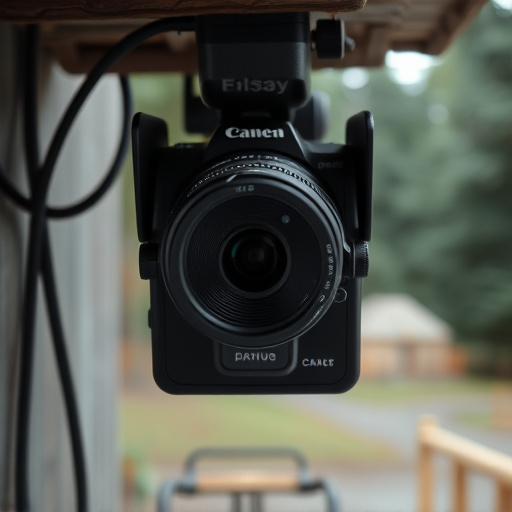Battery-powered covert nanny cameras have revolutionized surveillance with discreet and portable monitoring solutions. Blending into everyday objects like toys, plants, or smoke detectors, these devices offer advanced features such as high-definition video, motion detection, and wireless connectivity. With rechargeable batteries lasting several days to a week and low-power modes for extended usage, they provide seamless integration into various environments without raising alarm. Their innovative technology facilitates high-quality recording and live streaming, making them indispensable tools for security professionals. However, navigating ethical and legal boundaries is crucial, including respecting privacy rights, confining installation to authorized personnel, and complying with data protection laws like GDPR.
In the realm of surveillance, advanced techniques for disguising equipment have evolved, particularly with the rise of battery-powered covert nanny cameras. This guide delves into the intricate world of camouflage, exploring how these tiny yet powerful devices can blend seamlessly into their surroundings. From understanding basic components to advanced placement methods and ethical considerations, we provide a comprehensive overview for those seeking expert insights on battery-powered covert nanny cameras.
- Understanding Battery-Powered Covert Nanny Cameras: Uncover the Basics
- Advanced Placement and Camouflage Techniques: Enhancing Discretion
- Ensuring Ethical Use and Legal Considerations in Surveillance Equipment Camouflage
Understanding Battery-Powered Covert Nanny Cameras: Uncover the Basics
Battery-powered covert nanny cameras have revolutionized surveillance by offering a discreet and portable solution for monitoring activities. These devices are designed to be hidden, often resembling everyday objects like toys, potted plants, or smoke detectors, making them ideal for home security, child supervision, or even professional monitoring. Under the hood, they’re packed with advanced technology—high-definition video recording, motion detection, and wireless connectivity.
Understanding how these batteries operate is key to their effectiveness. Many use rechargeable batteries that can last for several days to a week on a single charge, ensuring continuous surveillance without constant battery replacements. Some models even boast low-power modes that conserve energy when there’s minimal activity, further extending their operational lifespan.
Advanced Placement and Camouflage Techniques: Enhancing Discretion
In the realm of surveillance, advanced placement and camouflage techniques have revolutionized discretion. Battery-powered covert nanny cameras, for instance, are meticulously designed to blend into their surroundings, making them near-impossible to detect. These tiny yet powerful devices can be strategically placed in various environments, from dense forests to urban settings, without raising suspicion. Their low-profile nature ensures they remain hidden for extended periods, capturing critical evidence or monitoring activities unobtrusively.
By employing innovative camouflage techniques, these cameras enhance the overall effectiveness of surveillance operations. Whether integrated into everyday objects like plants, rocks, or even clothing, their advanced technology allows for high-quality video recording and live streaming. This versatility enables professionals to navigate diverse landscapes and adapt to changing conditions, making them invaluable tools in modern security practices.
Ensuring Ethical Use and Legal Considerations in Surveillance Equipment Camouflage
In the realm of surveillance equipment camouflage, particularly with battery-powered covert nanny cameras, it’s paramount to navigate ethical and legal boundaries responsibly. The use of such advanced techniques must uphold privacy rights and respect individual freedoms. Installation and operation should be confined to authorized personnel, ensuring compliance with relevant laws and regulations. Ethical considerations include obtaining informed consent from individuals being monitored, especially in public spaces or private properties where expectations of privacy can vary.
Legality is a crucial aspect; understanding and adhering to data protection laws, such as the General Data Protection Regulation (GDPR) or industry-specific standards, is essential. Proper training for handlers and a robust system for storing and securing footage are integral steps. Additionally, transparency in the use of surveillance equipment can foster public trust, making it an indispensable part of responsible implementation of these advanced techniques.
Battery-powered covert nanny cameras, with their advanced camouflage techniques, offer enhanced discretion for surveillance. However, it’s crucial to navigate their use ethically and within legal boundaries. By understanding the basics and employing sophisticated hiding methods, users can take advantage of these devices while respecting privacy. Remember that responsible deployment is key in harnessing the benefits of this technology.
